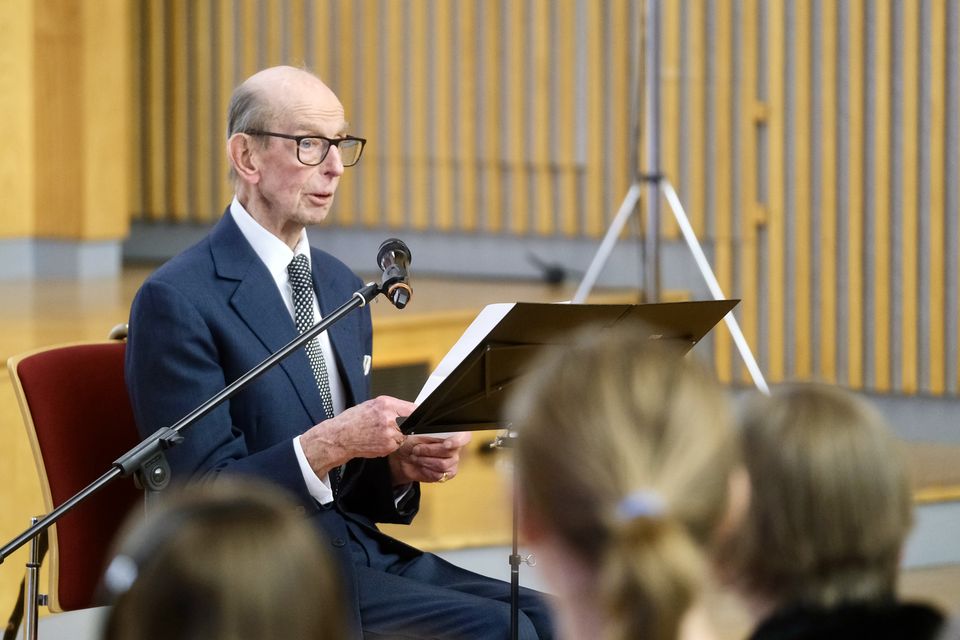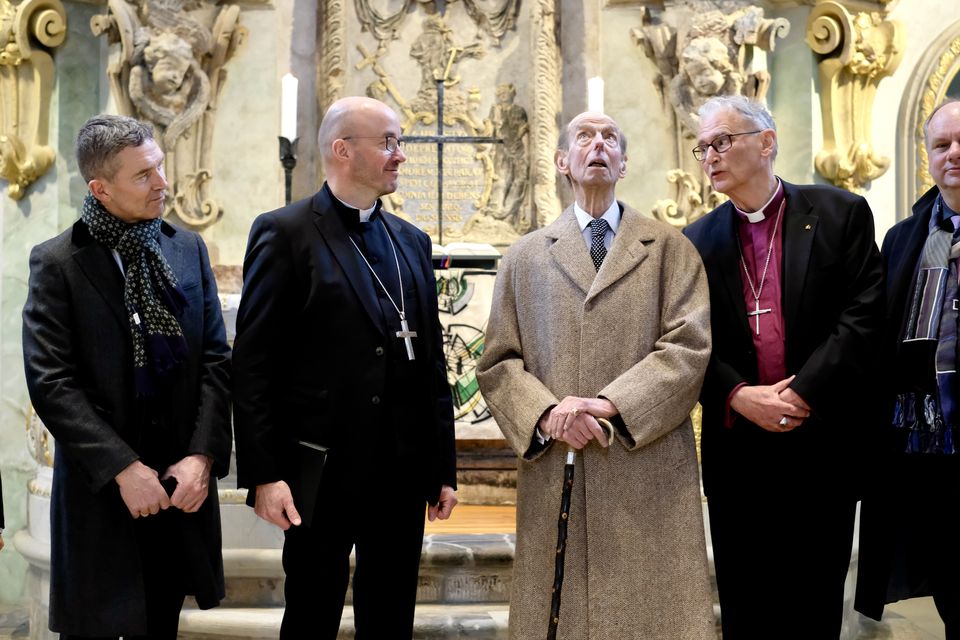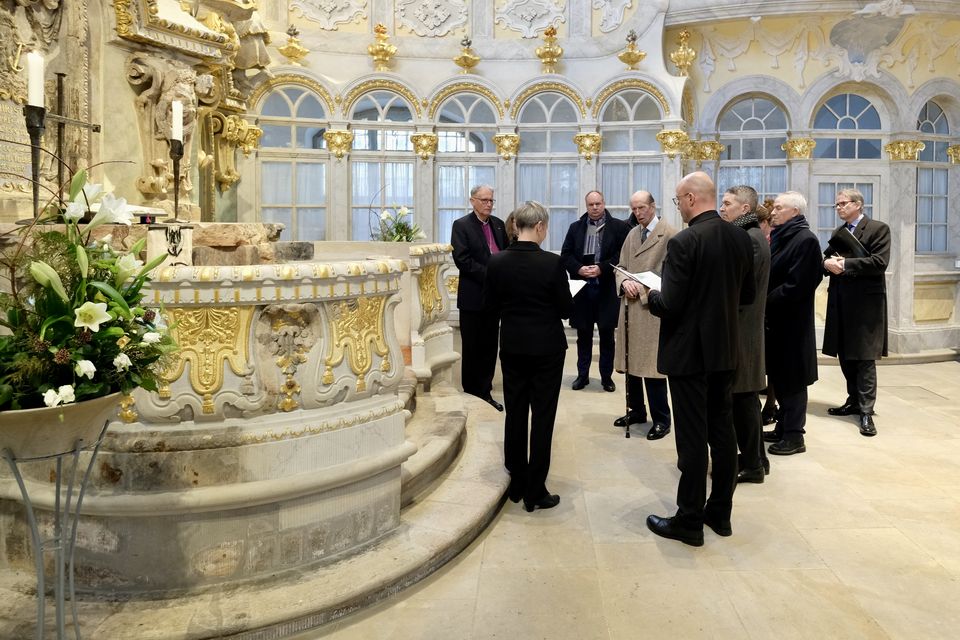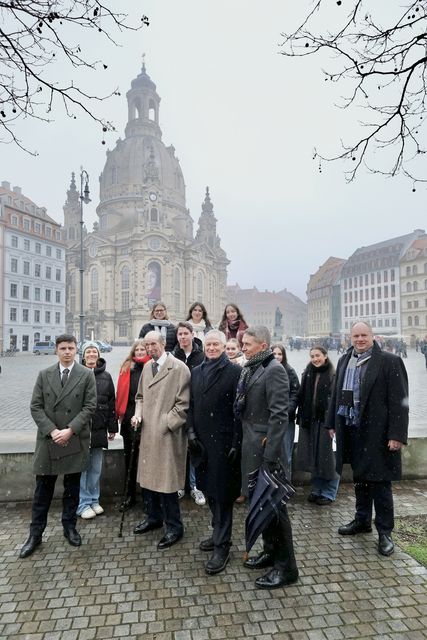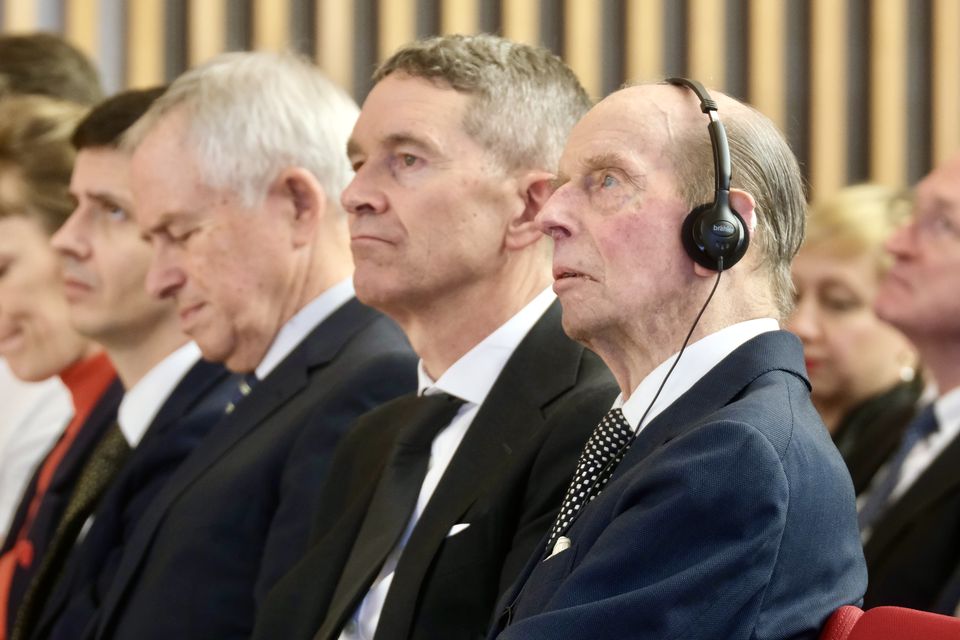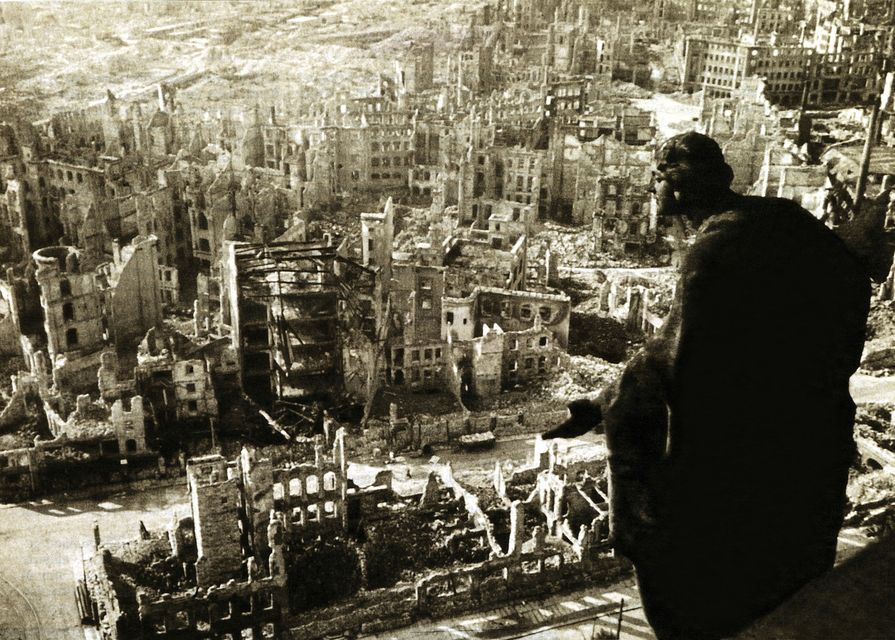The Duke of Kent has described “the grief we feel in our hearts” at the “terrible destruction and loss of life” in the Allied bombing of Dresden as he marked the 80th anniversary of the devastating Second World War assault.
Edward, the late Queen’s 89-year-old cousin and the oldest working member of the royal family, travelled to Germany on Thursday to represent the King at the solemn occasion.
Around 25,000 people were killed in the firestorm and much of the historic baroque city was razed to the ground when British and American bombers launched the aerial raid three months before the end of the Second World War.
The Duke of Kent delivered his speech in German (Till Budde/British Embassy Berlin/PA)
The duke delivered his entire speech in German at the official commemoration event in Dresden Town Hall.
He described his determination to heal the wounds of war, and hailed Britain’s reconciliation with the people of Dresden in recent decades.
“We are gathered here today to commemorate the terrible destruction and loss of life 80 years ago,” the duke said.
“In addition to the grief we feel in our hearts, we also look back on 30 years of reconciliation and growing friendship between Britain and the people of Dresden.
The duke looks up at the interior of the restored Frauenkirche in Dresden (Till Budde/British Embassy Berlin/PA)
“As patron of the Dresden Trust, this is very close to my heart. It is my firm desire to heal the wounds of war and promote peace.”
He added: “It is always a pleasure to return to this city, which now shines beautifully in its historical splendour.
“I thank you from the bottom of my heart for the friendship you have shown me and the members of the Dresden Trust.”
The duke inside the Frauenkirche (Till Budde/British Embassy Berlin/PA)
The duke also took part in a moment of reflection at Frauenkirche – the Church of Our Lady – which was destroyed during the assault and later reconstructed.
The church was left in ruins as a memorial to the conflict for more than half a century, representing, for some, a symbol of the aggression of the Allied forces.
It was completely renovated and finally returned to its former glory in 2005 with support from the Dresden Trust.
The duke poses for a photo in front of the restored church (Till Budde/British Embassy Berlin/PA)
The rebuilt cross and orb which sits on top of the church’s dome was a gift from the British people to Dresden.
The duke, who has visited the city many times, has served as royal patron of the Dresden Trust since it was set up in 1993 to help rebuild the city and build bridges between the UK and Dresden.
He has also been patron of the British German Association since 1994.
The duke listening to a translation on a set of headphones during the ceremony (Till Budde/British Embassy Berlin/PA)
The duke spoke of the new Dresden Learning Path, an interactive digital educational project to encourage students to become aware of the destruction of Dresden and the historical significance of the city in the 20th century.
He will later join a human chain around the old town, where hundreds of people stand hand in hand each year to form a protective ring in remembrance of those who died.
The devastating two-day attack by RAF Bomber Command began on February 13 1945 and saw 4,000 tonnes of bombs dropped.
Dresden in ruins after the Second World War bombing (Prisma by Dukas Presseagentur GmbH/Alamy/PA)
It has become one of the most controversial Allied acts of the war.
In previous years, the anniversary has been used by far-right groups to stage rallies in the city, which in turn has prompted anti-extremist demonstrations.
